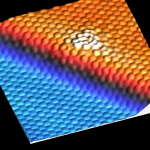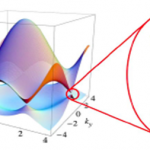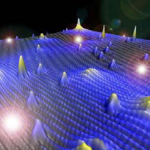The Center for Emergent Materials engages researchers from multiple disciplines to work in teams on scientific problems too complex for a single researcher to solve. The CEM, established in 2008, is located at The Ohio State University and funded by a National Science Foundation MRSEC award.
2026-2032 CALL FOR IRG PROPOSALS
The CEM is requesting proposals for Interdisciplinary Research Groups (IRGs) to participate in the MRSEC recompetition process. The CEM has just completed four years of its third six-year term and is soliciting proposals from collaborative teams to form these new IRGs. Successful proposals will be part of the CEM white paper, due to NSF in June 2025.
Full-scale IRGs will have 7-12 faculty members. Proposals will be reviewed according to the same criteria used to select NSF MRSECs. The MRSEC program seeks compelling collaborations assembled for the express purpose of performing the proposed cutting-edge research, which must be of a scale and complexity that requires a center environment. The MRSEC program is the flagship funding mechanism of the Division of Materials Research (DMR), and the research program must fall within their purview; insight into the range of topics can gained at MRSEC.org
Key Dates
- 1st IRG Team-building Poster Session: September 30th, 4-6pm, PRB 4138.
- open both to existing small teams and researchers interested in joining
- 2nd IRG Team-building Poster Session: November 1st, 2-4pm, PRB 4138.
- open both to existing small teams and researchers interested in joining
- Letter of Intent (LOI) due Monday, December 16th, 2024
- Proposal due noon Tuesday, January 21st, 2025
Read the full solicitation and requirements here.
NEWS
CEM and CSULB Awarded NSF PREM Funding
The Center for Emergent Materials and California State University, Long Beach (CSULB) will embark together on a program to expand participation and access to materials science facilities, education, training and careers. Funded by the National Science Foundation (NSF), Partnerships for Research and Education in Materials (PREM) awards are intended to broaden access to skills and opportunities by supporting strategic partnerships between minority-serving institutions and NSF-funded research centers at research-intensive institutions.
The $4.2 million PREM award leverages CSULB’s status as an urban Hispanic-serving institution to build educational pathways at the undergraduate and graduate levels, including post-bachelors bridge programming into technology careers and a research-based Master of Sciences degree. The program’s research is focused on exploring applications in magnetic storage, energy-efficient devices and bio-inspired materials.
Features
Yu Receives 2024-2025 OSU Alumni Award for Distinguished Teaching
The Ohio State University’s Alumni Award for Distinguished Teaching was established during the 1959-60 academic year and is one of the university’s most prestigious teaching awards. Ten faculty members were recently honored with the award, including Prof. Shirley Yu. The honorees were notified of their awards through surprise announcements led by senior university leaders.
“Using evidence-based practices to create engaging, supportive and challenging courses in face-to-face, hybrid and online formats, Shirley L. Yu is recognized as an outstanding educator who has made a lasting impact on her students. Beyond the classroom, Yu is a generous mentor to students and alumni across EHE and beyond. She leads an active research laboratory and directs the Graduate Certificate in College and University Teaching(opens in new window). Her expertise was also formally recognized with her college’s Distinguished Teaching Award in 2018.”
Read more here.
Heremans Elected to National Academy of Inventors 2024
The newest NAI fellows from Ohio State are Joseph Heremans, professor of mechanical and aerospace engineering and an Ohio Eminent Scholar in Nanotechnology, and two retired professors: 2023 Nobel Laureate Pierre Agostini, professor emeritus of physics, and Longya Xu, who recently retired as professor of electrical and computer engineering after more than 30 years on the faculty.
The NAI Fellowship is the highest professional distinction awarded solely to inventors. The 2024 class comprises 170 researchers from 135 research universities, governmental and nonprofit research institutions worldwide. This year’s selection of Heremans, Agostini and Xu brings the number of Ohio State NAI fellows to 21.
Read more here.



